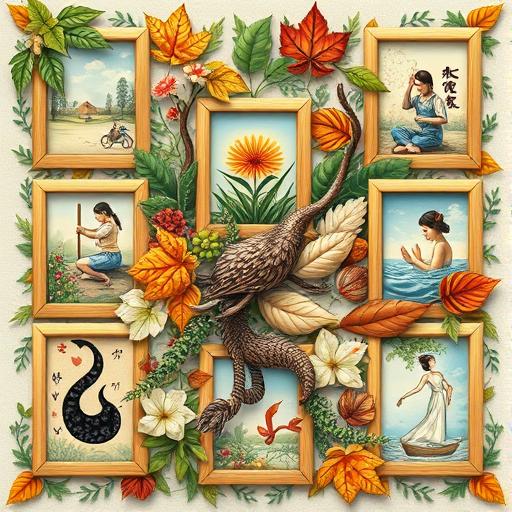Harnessing Emotional Intelligence as a Freelance Graphic Designer: The Key to Creative Success

Harnessing Emotional Intelligence as a Freelance Graphic Designer
Harnessing Emotional Intelligence as a Freelance Graphic Designer: The Key to Creative Success
Understanding Emotional Intelligence: A Game Changer for Freelancers

In the multifaceted world of freelancing, especially in creative professions like graphic design, technical skills are just one side of the equation. The other, often overlooked but equally essential side, is emotional intelligence (EI). Emotional intelligence refers to the ability to identify, understand, and manage emotions—both your own and those of others. For freelance graphic designers, this skill not only enhances personal satisfaction and mental well-being but also profoundly impacts client relationships, collaboration efforts, and overall career sustainability.
Imagine this scenario: You’ve just sent a design proposal that you hold dear, but the response from your client is lukewarm. What’s your reaction? Do you take it personally, letting disappointment cloud your judgment? Or do you measure your emotional response, analyze the feedback, and use it as a stepping stone for improvement? Freelancers with well-developed emotional intelligence often lean towards the latter, providing them a significant advantage in navigating the turbulent waters of client satisfaction and project demands. 🔥
The Role of Emotional Intelligence in Creative Collaboration

Effective collaboration is at the core of successful freelance graphic design projects. Whether you’re working as part of a larger creative team or managing client relationships, emotional intelligence plays an indispensable role in facilitating these interactions. High EI enables graphic designers to communicate effectively, share ideas freely, and empathize with the perspectives of others.
For instance, during brainstorming sessions, a designer with strong emotional intelligence is likely to filter feedback constructively, fostering a positive atmosphere where creativity can flourish. By being aware of non-verbal cues and showing active listening skills, they can help others feel valued and understood, which in turn solidifies a collaborative spirit. When this harmony exists, not only does the quality of work improve, but team morale and project outcomes often exceed expectations. 🌟
In the freelance realm, clients appreciate responsive and empathetic professionals. A designer who takes time to understand the client's emotions and vision is more likely to translate them into compelling designs, leading to higher satisfaction and repeat business.
"Emotional intelligence is not the opposite of intelligence, it is not the triumph of heart over head — it is the unique intersection of both." - David Caruso
Improving Your Emotional Intelligence Skills
The good news is that emotional intelligence can be developed and enhanced through deliberate practice. As a freelance graphic designer, raising your EI can vastly influence your career trajectory. Here are some key areas to focus on to improve your emotional intelligence:
- Self-awareness: Start by developing a keen awareness of your own emotions, triggers, and reactions. Practicing mindfulness can help you gain insights into your emotional processes and how they affect your work.
- Self-regulation: Once you recognize your feelings, practice techniques to manage them. This might mean taking a calming breath before responding to feedback or training yourself to stay positive when facing creative blocks.
- Empathy: Engage actively with clients and collaborators. Learn to read their emotions and respond appropriately. Ask questions, listen attentively, and reflect on their needs—this will not only strengthen your relationship but also space for creative ideation.
- Social skills: Work on building strong relationships by enhancing your communication skills. Creating a network of supportive colleagues, clients, and mentors will help you develop a well-rounded approach to handling difficult situations and navigating creative partnerships.
- Motivation: Cultivate intrinsic motivation by setting personal goals that align with your creative passions. Celebrating small wins along the way will keep your enthusiasm alive and contribute to a positive mindset.
How to Enhance Your Emotional Intelligence
- Practice mindfulness for self-awareness.
- Create a feedback processing plan to manage reactions.
- Schedule regular check-ins with clients to gauge their emotional state.
- Join professional networks to build social skills.
- Set personal artistic challenges to maintain intrinsic motivation.
Using Emotional Intelligence to Address Client Feedback

Receiving feedback is an everyday occurrence for freelance graphic designers, and how you respond can make a huge difference—not only in your relationships but also in the quality of work produced. Emotional intelligence equips designers to navigate client feedback gracefully, transforming possible misunderstandings into collaborative opportunities.
For instance, when faced with negative feedback, an emotionally intelligent designer separates personal feelings from professional critique. Instead of viewing criticism as a personal attack, they recognize it as a tool for refinement. By positioning themselves as receptive and open to constructive criticism, designers can engage in meaningful dialogues that benefit both parties. 🔍 This approach builds trust and rapport, creating an environment in which clients feel secure in expressing their needs and desires.
Furthermore, when a client’s emotional state shifts, perhaps due to stress or deadline pressure, an emotionally intelligent designer can sense this change and adapt their communication style accordingly. This flexibility not only helps maintain a positive relationship but also ensures that the project stays on track despite obstacles.
The Long-Term Benefits of Emotional Intelligence in Freelance Success
Investing time and effort into enhancing emotional intelligence brings long-term career benefits for freelancers. Designers who master EI often experience higher levels of job satisfaction and lower levels of workplace stress. This, in turn, leads to a healthier work-life balance, which is a crucial aspect of sustaining a freelance career over the years. 🚀
Moreover, cultivating strong relationship-building skills through emotional intelligence creates a loyal client base. Clients are more likely to return to designers who understand their needs and consistently deliver value. This not only leads to repeat business but also enhances word-of-mouth marketing, exponentially expanding your customer reach without the hefty costs of advertising.
In the ever-evolving landscape of freelance graphic design, staying ahead in terms of skill set is vital. Yet, while technical proficiency can get you in the door, it’s emotional intelligence that keeps the door ajar for future opportunities. The designers who will thrive are not solely those with the sharpest skills, but instead those who harness emotional intelligence as a fundamental determinant of their freelance success.
Conclusion

Emotional intelligence isn’t just a buzzword; it’s a crucial skill that every freelance graphic designer should develop to elevate their craft. With an emphasis on self-awareness, empathy, and interpersonal relations, individuals can greatly enhance their client interactions, creative outputs, and overall career satisfaction. The path to mastering emotional intelligence requires intentional effort and practice, but the rewards it reaps—stronger client relationships, improved collaborative efforts, and a sustainable freelance career—are worth every investment.
Remember, as you nurture your emotions and interactions, you’re not only cultivating your career but honing a unique creative voice that speaks to the hearts of your clients. So, embrace this journey, improve your emotional intelligence, and watch your graphic design career flourish beyond imagination! 💪
Start Your Journey Today!
Embrace emotional intelligence and unlock your full creative potential! Take action now and elevate your freelance career!
